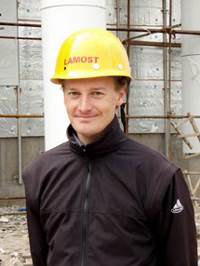Korn Andreas - Gaia
Gaia contributors
Gaia was proposed in 1993 and since then, many people have been involved in the Gaia mission, whether at ESA, at industry side or at one of the institutes involved in the Gaia data processing. The Gaia Data Processing and Analysis Consortium (DPAC) is a collaboration which consists of around 450 scientists and engineers.
The list of Gaia contributors presented here should not be considered a complete representation of the entire consortium and should not be considered as a list of currenly active people on the Gaia mission. A more complete list of Gaia contributors that were involved in the creation of the Gaia catalogues can be obtained from the author lists of the Gaia Collaboration overview papers (for Gaia Data Release 1 see here, for Gaia Data Release 2 see here, for Gaia Early Data Release 3 see here, for the full Gaia Data Release 3 see here, for Gaia Focused Product Release see here). A history of contributions to the Gaia mission can be found from the acknowledgements given with each data release.
Gaia DPAC members who wish to be featured on these pages can contact the Gaia Helpdesk. Anyone who wishes to be removed from this website can contact the Gaia Helpdesk.
 |
Andreas Korn Uppsala Astronomical Observatory |
|
Andreas Korn is a stellar spectroscopist at Uppsala Astronomical Observatory, Sweden. Within CU8 (Astrophysical Parameters) he is in charge of coordinating the Europe-wide computation of stellar synthetic observables (fluxes and spectra). These are used for training the codes and will form the basis for deriving the physical parameters of the stars observed by Gaia. Andreas was awarded his PhD on 'Cool-star Gravities' from the University of Munich in 2002. After a postdoc at the Max-Planck Institute for Extraterrestrial Physics (MPE) in Garching, he went to Uppsala to do research with Bengt Gustafsson. A certain emphasis has been on cool metal-poor stars and the modelling of their spectra. His recent finding of diffusive processes in unevolved metal-poor globular-cluster stars (see Nature paper, or pdf file has attracted considerable attention as it seems to solve a discrepancy between stellar and Big-Bang lithium abundances uncovered by WMAP. Together with researchers at Nice (OCA) and elsewhere, Andreas is also trying to relax a number of far-reaching assumptions (mixing-length convection, LTE) made in classical stellar-atmosphere models. By raising the level of modelling realism, it is hoped that certain aspects of the astrophysical interpretation of Gaia (e.g. age determinations) will not be subject to severe systematic biases. [Published: 27/04/2007] |
|
- Removed a total of (2) style text-align:center;
- Removed a total of (4) style text-align:justify;
- Removed a total of (1) border attribute.
- Removed a total of (1) cellpadding attribute.
- Removed a total of (1) cellspacing attribute.
Gaia people archive
- Removed a total of (1) style overflow:auto;
- Removed a total of (2) border attribute.
- Removed a total of (2) cellpadding attribute.
- Removed a total of (2) cellspacing attribute.








































 Sign in
Sign in
 Science & Technology
Science & Technology

